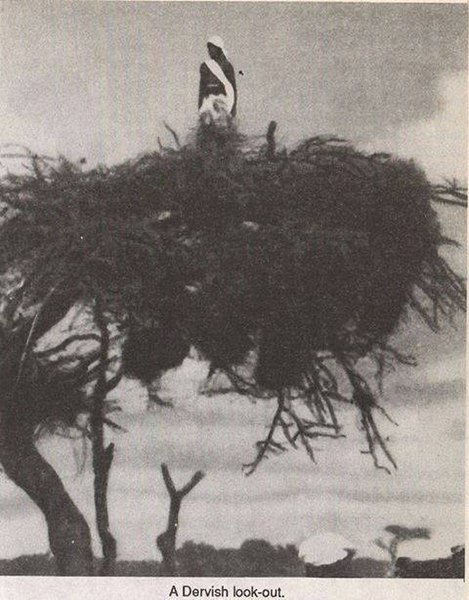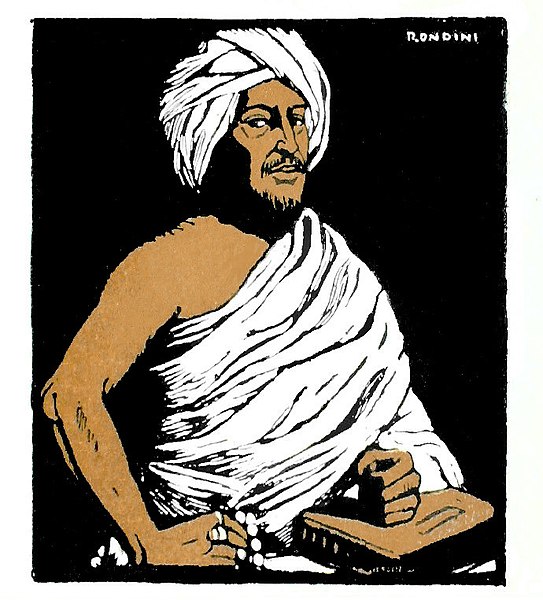Dervish movement (Somali)
The Dervish Movement was a popular movement between 1899 and 1920, which was led by the Salihiyya Sufi Muslim poet and militant leader Mohammed Abdullah Hassan, also known as Sayyid Mohamed, who called for independence from the British and Italian colonisers and for the defeat of Ethiopian forces. The Dervish movement aimed to remove the British and Italian influence from the region and restore the "Sufi system of governance with Sufi education as its foundation", according to Mohamed-Rahis Hasan and Salada Robleh.
Taleh fortress, the Dervish capital.
Dervish scout on top of a tree
The historic Daarta Sayyidka Dervish fort in Eyl, Puntland.
The last residents of the Silsilad fort were Haji Yusuf Barre, the singlehanded defender of Taleh, Mohamud Hosh (pictured), the last castellan of Taleh and Jama Biixi Kidin, an abandoned Dervish child prisoner.
Muḥammad ibn 'Abdallāh Hassan
Muḥammad ibn 'Abdallāh Hassan was a Somali religious, political, and military leader who founded and headed the Dervish movement, which led a Holy war against British, Italian, and Ethiopian intrusions in the Horn of Africa. Due to his successful completion of the Hajj to Mecca, his complete memorization of the Quran and his purported descent from the Islamic prophet Muhammad, his name is sometimes preluded with honorifics such as Hajji, Hafiz, Emir or Sayyid. He was famously known by the British Empire as the Mad Mullah. In 1917, the Ottoman Empire referred to Hassan as the "Emir of the Somali". His influence led him to being regarded as the “Father of Somali nationalism”.
Statue of Muhammad Abdullah Hassan in Mogadishu
Aw Abdille Ibrahim was one of two chosen khusuusis to accompany the Sayid after the Fall of Taleh.
Illustration of Mohamed Abdullah Hassan by da Rondini, from cover of Il Mullah del paese dei somali by Douglas Jardine
The Dervish fort / Dhulbahante garesa in Taleex







